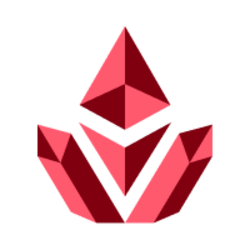A year ago Nvidia spent about $1 billion on the acquisition of two Israeli software companies. The first deal was for Run:AI, which has developed a solution to make the most of the processing power in Nvidia’s graphics processors; and the second was for Deci.ai which has developed technology to “shrink” creative AI language models, allowing those models to be run using less computing power. While the acquisition of Run:AI had top jump through regulatory hurdles until the deal was approved eight months later, the acquisition of Deci.ai was completed very quickly, with the circumstances not disclosed.
Deci.ai, “Globes” can reveal has already been integrated into Nvidia’s software operations, and it is taking a significant part in the company’s new marketing strategy, in an era after the launch of China’s DeepSeek, in which Nvidia is betting all out on “AI agents.” Nvidia CEO Jensen Huang has been promoting what are known as “inference models” in recent months – language models that are not content with providing detailed answers, but are also capable of performing actual tasks. These models have been dubbed “intelligent agents.”
Unlike the language models of recent years, which have been mainly intended for training and operating chat engines like ChatGPT and Claude, for a fee of about $20 per month per user – AI agents are intended to be sold to organizations at much higher prices, and to perform various tasks for development, service, operations and finance managers, saving valuable time for existing employees and perhaps even replacing some of them. Nvidia talks about AI agents that write software code, compile scientific studies and take part in accounting tasks such as payroll management in organizations already today.
The role of Dec.ai in development
In recent months, Nvidia has announced several agreements. For example, with ServiceNow, which uses its inference models to deploy customer service and employee support agents; an agreement with Israeli business systems company Amdocs to develop agents for telecom operators that will help handle customer requests and make their information more transparent; and with SAP and Salesforce to develop agents that can also answer queries related to the enterprise information system it sells.
To enable its customers – the software giants – to build and run intelligent agents themselves, Nvidia itself has launched a series of basic language models called “inference models” (LRM), which are aimed at companies interested in developing digital AI agents that will perform complex tasks themselves by simplifying tasks. The model, based on training from Meta’s Llama, is called Llama Nemotron by Nvidia, and will be marketed for free as open source, to attract customers to the company’s paid products.
RELATED ARTICLES
Nvidia leases 10 more floors in Tel Aviv tower
Nvidia Israel to benefit from huge Saudi deal
Nvidia’s Israel AI spending spree has downside
Now, Nvidia’s VP Generative AI Software for Enterprise Kari Briski, has revealed the role of Deci.ai in the new development. Deci.ai helps shrink the number of parameters and bits used for the operation of language models, so that they actually make the processing of AI operations faster, with lower demand for processing power. Briski tells “Globes,” “Deci uses a neural architecture with its own software, which allows the inference model to be reduced from 70 billion parameters to models of 49 billion, which makes it more efficient,” It also allows the level of accuracy of the model’s operation to be increased from 16 bits to 8 bits (FP8), while maintaining performance.
Until last year, Deci was one of the few Israeli companies to develop its own language models. It was founded by Dr. Yonatan Geifman, Prof. Ran El-Yaniv, and Jonathan Eliel, some of whom were Google executives who were discouraged by the high costs dictated by AI processing due to the expensive hardware needed, and were looking for a solution from the software world that could accelerate the use of AI and allow more software developers to benefit from it. Before being sold for $300 million, Deci had raised $55 million Insight Partners Fund and Israeli fund Emerge.
Helped by the DeepSeek model
Briski explains Nvidia’s choice to stick with Meta’s open-source model. She says, “Our Nimotron model is based on Llama 3, because it is the most common open model among enterprise customers, and we saw that there was an opportunity here to improve it and quickly reach many customer programs that are already active.”
Brisky also points out that Llama is not the only star of its new open model. The AI giant even used DeepSeek’s new and successful R1 model, which has won praise from Sam Altman and Bill Gates, among others. “We used synthetic data from R1, but we controlled its data output,” she explains.
In March, Nvidia CEO Jensen Huang presented DeepSeek and the like as a huge growth engine for the company, precisely because its launch stresses the need to buy many chips. This comes two months after DeepSeek’s launched shaved $600 million off Nvidia’s market cap in one day.
Published by Globes, Israel business news – en.globes.co.il – on May 22, 2025.
© Copyright of Globes Publisher Itonut (1983) Ltd., 2025.





































